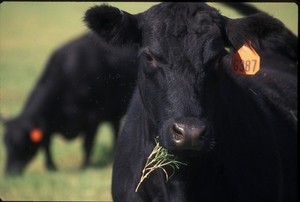US producers hit by increased milk price
of factors across the country. Analysts are blaming low production
on the discovery of Canadian BSE, the high price of animal feed and
even the revolution of low-carb diets. Milk costs are now at an all
time high and observers claim the increase has forced even some of
the most traditional dairy producers to turn to some non-milk
alternatives,writes Danny Vincent.
Milk pricing in the US has fluctuated substantially over the last year. According to industry observers, milk prices in April 2003 were at an 25 year low but this year producers who rely on milk as a raw ingredient for their products are having to face an all time high in milk prices across the country.It is estimated that the price of a gallon of milk has increased more sharply than previous years. A year ago an average retailer would pay around $2.85 for a gallon of the milk, today however, retailers may have to pay up to $3 for the same amount.
There has been a number of factors that have contributed to the increase in price over the last year.These factors may mean that retailers, producers and ultimately consumers will have to pay higher prices for products.
For example, the leading coffee retail outlet Starbucks, said that it may have to pay an additional $10m - $15m for milk for the rest of 2004. And said that dairy costs had a negative impact of 10 per cent on its first quarter results. It is likely that the group will not raise prices as a results of the increase but producers that rely more heavily on the raw material such as those that make ice cream are trying to side step the problem.
Ice cream makers in particular are suffering at the hands of the price increase. For instance, Carvel Ice Cream, the group famous for it soft-serve ice cream and premium ice cream cakes has recommended a 1 per cent hike to holders of its 450 franchises as a result of the price increase. The group said that it is likely that the price of a scoop of ice cream will increase from $1,80 to $1.96.
Some companies are going as far as promoting lower cost products in order to save costs.It is reported that some producers are in talks with suppliers to set up a hedging system which ensures that they will be able to pay January prices for milk.
Nevertheless, it has been reported that some supplier groups have set up partnerships to keep the milk price high. They argue that the increase in milk price has in some ways been fueled by the terrible prices they received for their milk in the past.
Decrease in production
Last year milk prices were at its lowest point for 25 years but coincidentally as a result of the increase in low-carb diets, there was high demand for beef prices. This trend led many farmers to increase the number of cattle they slaughtered for meat which meant that the number available for milk production decreased.
This development, coupled with the discovery of BSE in Canada meant that there were 153,000 less dairy cows in the US. Canada previously supplied around 50,000 dairy cattle for the US but the discovery of BSE meant that no cattle crossed the border into the US. Analysts claim that the increase in costs of animal feed also added to the decrease in production. Total production this year is down 0.9 per cent.
Last summer, the hottest summer in the Northern Hemisphere on record, witnessed an increase in sales of ice cream consumption. According to a Euromonitor report, ice cream consumption - globally is increasing steadily. However, in the US it is not clear what impact the increase in milk prices may hold for ice cream consumption. Experts claim that it takes two years for a calf to develop to the stage where it can produce milk. It is likely that increased prices will continue to have a knock on affect on dairy prices.





